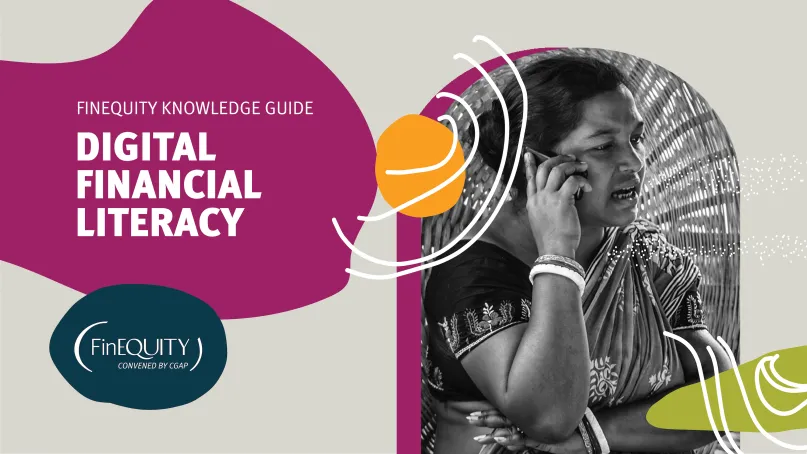Introducing FinEquity's New Knowledge Guide: Digital Financial Literacy

Recent years have seen a boon in interest in digital financial literacy (DFL) – it is now widely understood and accepted as a key enabler in the journey to women’s digital financial inclusion (DFI). Highly nuanced, DFL is influenced by many different enablers – numeracy, literacy, access, design and consumer protection – and constrained by gendered social norms. A recent GSMA study found that one of the three main barriers to mobile phone ownership for women is digital skills – I.e., the ability to use a mobile phone without assistance.
Of course, DFL does not solely affect women, but women are more impacted by DFL than men. As the old adage goes, practice makes perfect – but to practice and gain a level of comfort and familiarity with DFS, women need to have access to mobile phones and bank accounts. While more and more women are acquiring mobile phones, coming online, and opening financial accounts, there are still significant gender gaps. Across low and middle-income countries (LMICs) there is a 16% gender gap in mobile phone ownership – however, the regional differences are stark, with that gap growing to 41% in South Asia. Similarly, while the 5% global gender gap in bank accounts might seem insignificant, in Bangladesh and Nigeria that figure grows to 20%. Even with those who have a bank account, dormancy is much greater for women - women are 31% more likely to have an inactive account than men.
Other constraints – such as gendered social norms – also play a role here. Gendered social norms are shared expectations held by a community or society about how people should behave in certain environments, and these can limit women’s mobile phone ownership. These norms also impact DFL: when girls’ education is deprioritized in favor of men’s, there is an impact on women’s literacy and numeracy, and financial literacy — which in turn impacts their ability to easily navigate digital financial services (DFS). Globally, there is an 8% gap in literacy – but again, this masks more significant regional gaps -- in India, the literacy gap is almost 23%. While smartphones are often touted as easier for low-literacy women to use, the simple truth is that low-income and low-literacy women are even less likely to have a smart phone – even the cheaper models are more expensive than basic phones. The high cost of data and frequency of charging needs make these phones far less practical for the rural poor.
Amidst these challenges, how do we improve women’s DFL? Within FinEquity's DFL Knowledge Guide, we have collected and collated a series of resources that approach DFL from three different directions. Firstly, how do we understand from a broad standpoint what the existing resources that offer a practical overview and good practice in DFL are? Then, a series of implementation case studies helps us answer: where have we seen DFL initiatives successfully implemented? Finally, we share several curricula and training materials that have been used in DFL efforts across the globe.
The resources collated in this guide should offer a starting point – but as with all FinEquity Knowledge Guides, they will be updated as and when new and appropriate resources are published. Until then, we hope you find these resources – toolkits, academic papers, curricula, policy notes, thought pieces and case studies – useful as you approach this nuanced and evolving topic.
GSMA (2022) The State of Mobile Internet Connectivity 2022
FinEquity (2021) Enabling Women’s Financial Inclusion Through Digital Financial Literacy
World Bank (2022) The Global Findex Database 2021: Financial Inclusion, Digital Payments, and Resilience in the Age of COVID-19.
Mondato (2021) Minding the DFS Gender Gap: Battling Social Norms to Level the Playing Field


